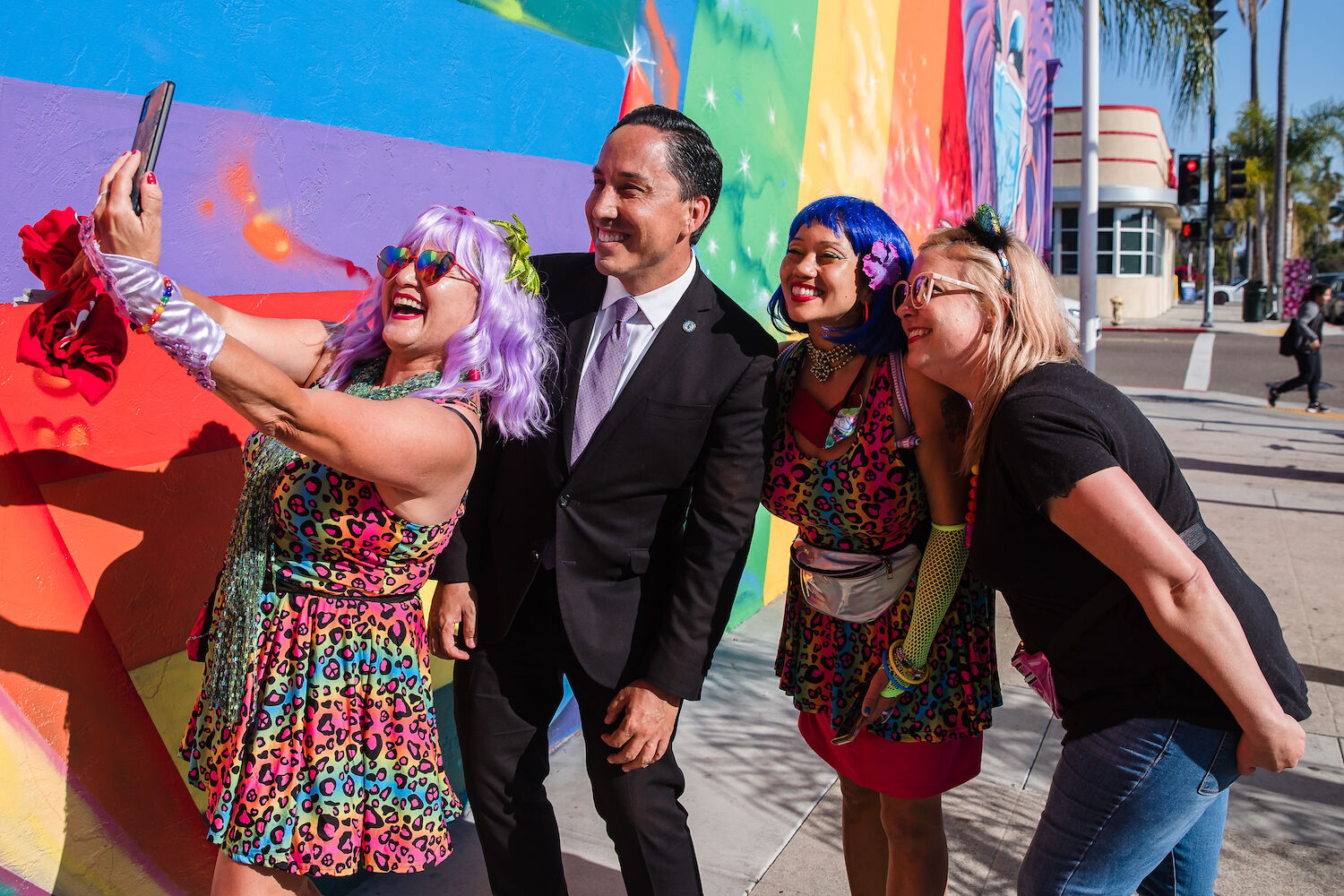
Todd Gloria – Pride
Todd Gloria’s mid-pandemic election as San Diego’s mayor was historic. He’s the first-ever person of color and the first openly gay man to hold the top leadership role in our city. He describes his ethnicity as Native American, Filipino, Dutch, and Puerto Rican. He’s been with his partner, Adam Smith, for about five years. In advance of this year’s Pride, the third-generation San Diegan spoke with us about what it means to lead our diverse community.
How are you celebrating Pride this year?
We understand it will be different this year, and that’s okay. Last year, my participation was to join in the social media live event in front of the pride flag in Hillcrest. I suspect it would be more substantial this year, but it won’t be the way that we’ve traditionally celebrated.
How has the LGBTQ community in San Diego evolved over your time here?
I think that San Diego plays a significant role in the national story of LGBTQ equality. For example, we have the second-oldest and third-largest community center in the nation. Then, when you look at the over-a-quarter-century of representation in Council District 3 in terms of out representatives to now, it’s sort of a bloomed family tree: our state senator, our assembly member, mayor, city council members. I think one of the evolutions has been that as our efforts have borne fruit, our LGBTQ San Diegans feel comfortable living in places outside of Hillcrest.
That’s what we should hope—that you could feel safe in any neighborhood in the city, and that’s increasingly true. At the same time, that presents a challenge, in that Hillcrest is the historic home of our LGBTQ community and, speaking for myself, both as a San Diegan and as mayor of the city, I want it to always stay that way. So we have to make sure we’re supporting our local businesses, particularly our bars, as they’ve always formed the foundation of our community.
So we have our community center, neighborhood efforts like the pride flag, the naming of Harvey Milk Street, and our intention to build a Pride Plaza promenade on Normal Street. These are efforts to make sure that, much like Little Italy is the historical home of the Italian community in San Diego, we want something similar in Hillcrest to make sure that folks always know that’s the historic home of LGBTQ. While we enjoy the gains of our civil rights and ability to live and be who we are, we always want to be able to come home, and Pride represents that. It’s coming home to celebrate our community and its progress.
Do you feel a particular responsibility toward the LGBTQ community as mayor?
I think the responsibility I feel is really toward the community to make them proud. I am the beneficiary of a lot of folks who worked over decades to make this election possible. Many people have worked so hard to achieve this milestone, and I want to make them proud. I also have a responsibility to our young people. Growing up in this city, I didn’t see myself reflected in government until [San Diego’s first openly gay elected official] Christine Kehoe arrived. I know what that meant for me to see her serve. I still hear from young people who share with me what my election means to them personally, so there is a responsibility to hopefully empower them to be whoever they want to be.
What are some of the diversity issues you’d like to address while in office?
There’s a lot. There are urgent matters around Black Lives Ma er and Stop AAPI Hate that really demand attention in the realm of diversity, inclusion, and equity. With regard to the LGBTQ community, it’s really about maintaining our status as being a national leader in the movement for equality. We have continually received 100-percent scores from the Human Rights Campaign for the policies and laws that we have in the city.
Our movement is ever-evolving. When I came out it was just “gay and lesbian,” but now it’s much more inclusive. I know that we will continue on that path.
I think about the fact that we have not come this far without our allies. In the way that many people stood with us as we fought for marriage equality
and other key rights, we have to pay it back. That means standing with our Black community as we work to make it clear that Black lives do matter. Stand with our immigrant community, recognizing that we as a border city have responsibilities to advocate and lead on this issue.
I’m invigorated by it because this isn’t about just one group of people. This is really about the totality of the diversity of the city and ensuring that everyone feels as though there’s a place for them in San Diego.


















